In the hands of Dutch artist Hilde Trip, feathers, leaves, seeds, and grasses, are transformed into compositions, that capture the delicate beauty of the natural world. By carefully collecting, preserving, and rearranging organic materials, she creates intricate wall pieces that blur the line between what is temporary and what can last forever.
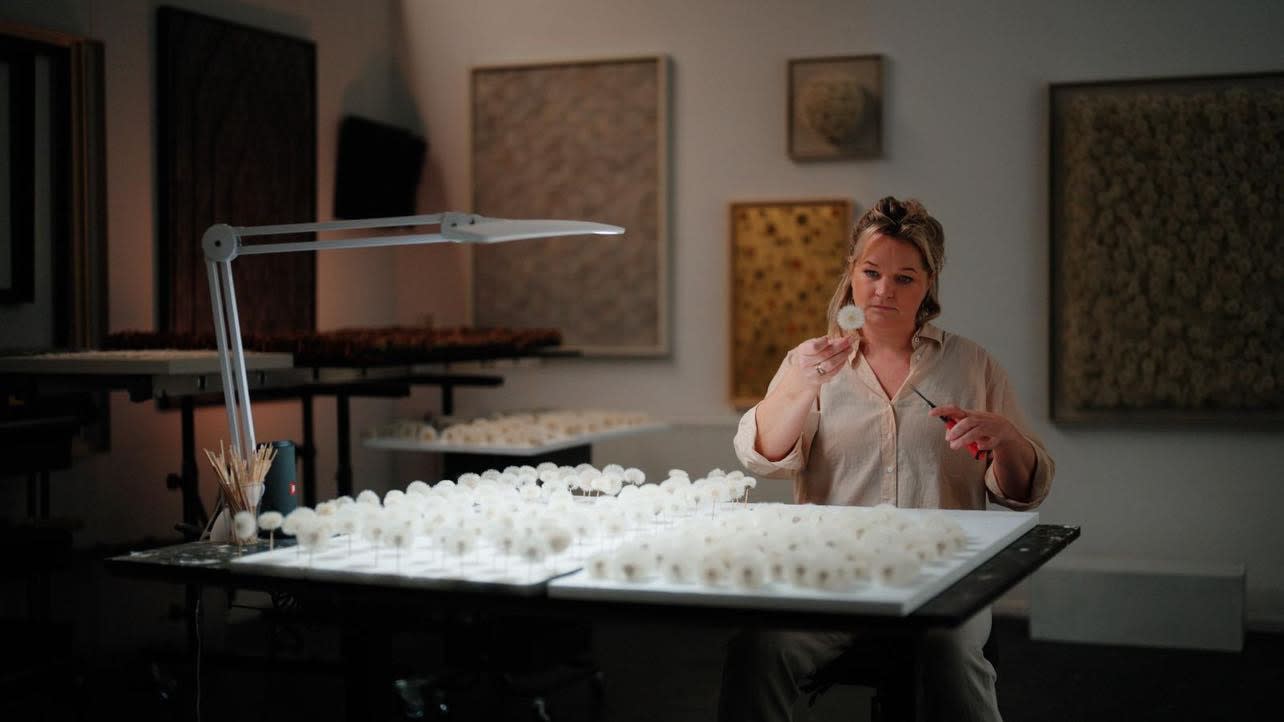
In the making: Hilde Trip, Wish Full
Hilde's connection to nature runs deep. She grew up on a farm, surrounded by the rhythm of the seasons, sowing, growing, harvesting. Her path to becoming an artist started in floristry, where she learned how to work with organic materials. The school, dedicated to trained florists, pushed her to think differently and develop her artistic voice. Later on, she travelled to New York and Japan but ultimately, she returned home to the Netherlands to set up her studio, where she continues her work today.
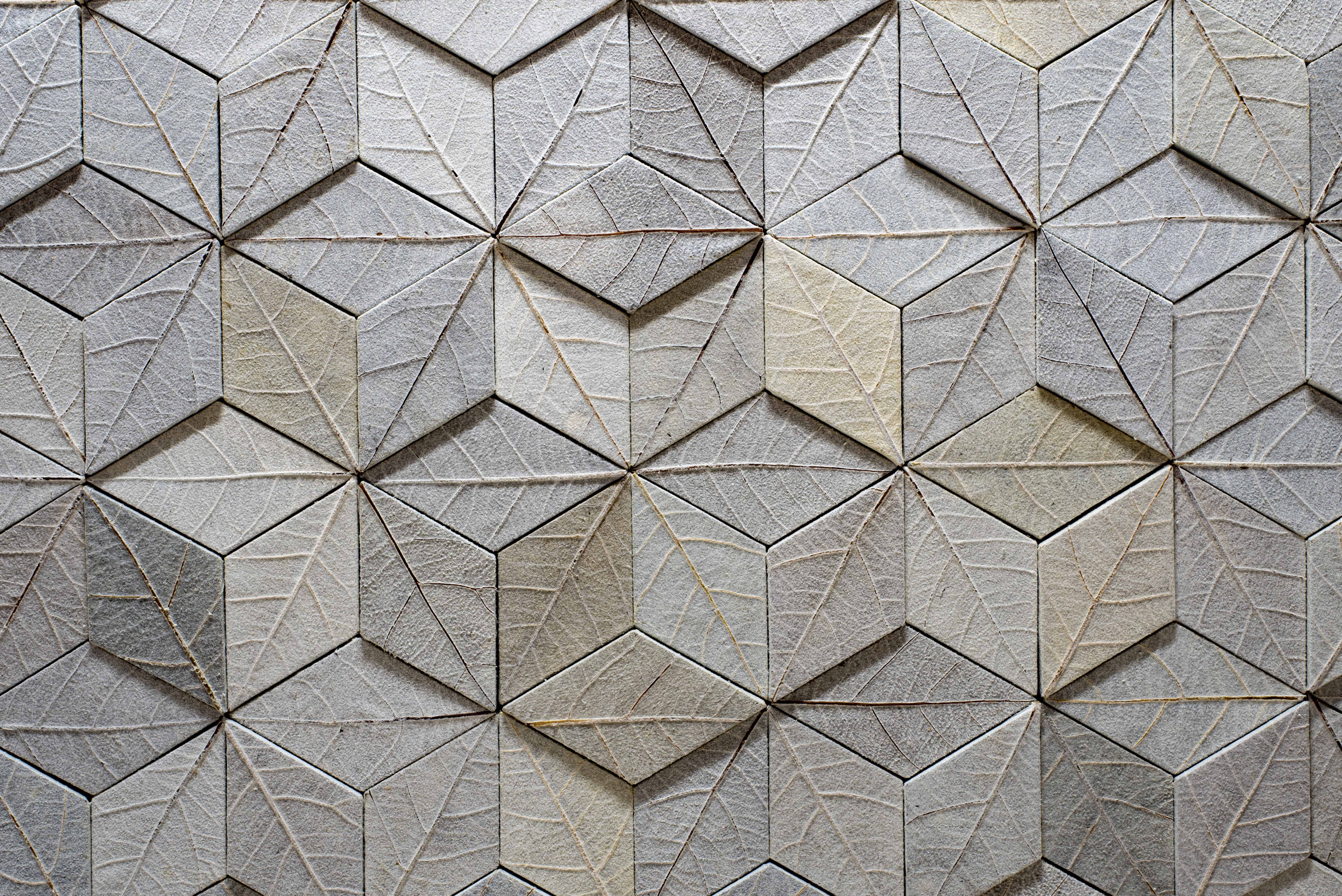
Hilde Trip: The dandelion fluff is, of course, a big favourite with its softness, and shape but also due to how delicate it is - a breath of wind makes the fluff spread through the air and plant new seeds. It has symbolic meaning too. The fluff collecting period can be short, as it is strongly dependent on the weather.
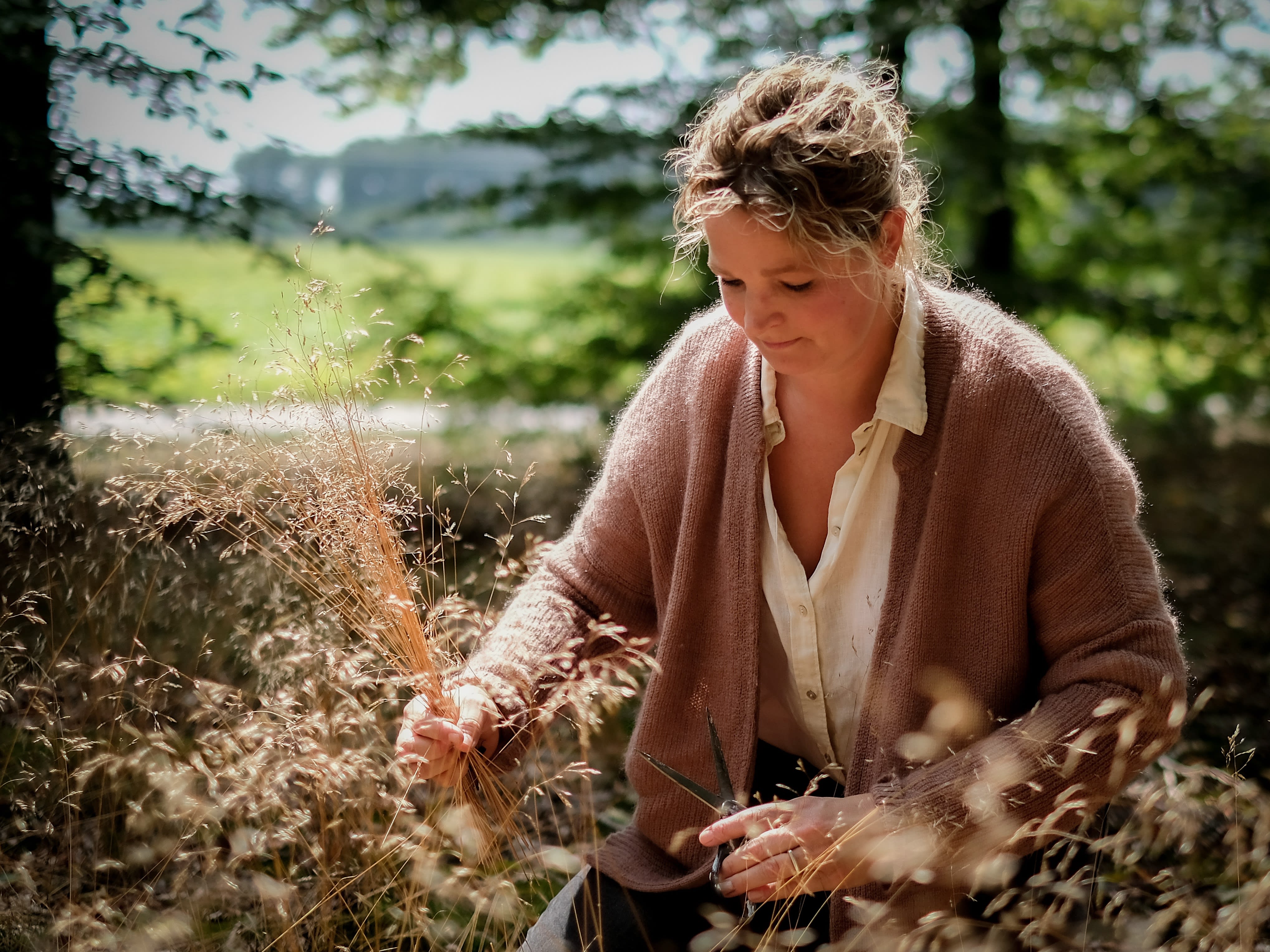
One of the most special aspects of Hilde's work is how delicate her art looks, yet how permanent it is. She preserves the fragile materials at their peak and transforms them into a contemporary mix of order and organic movement. A perfect example of this is her series of works featuring dandelion fluff. At first sight, these pieces seem highly delicate, as if even a breath would send them floating away. Yet, through a self-developed preservation technique, she ensures their structure remains intact, frozen in time. This paradox, where fragility meets permanence, runs through all her creations, making her art both thought-provoking and mesmerising.
MS: Have you ever worked with a material that turned out to be surprisingly difficult?
HT: I discovered along the way that I must put all my artworks in a large freezer for two months after creating them. Most natural materials need time to dry. I research new materials to see what the best way of preserving them is. I often spend two years working on test pieces to see how my idea reacts to the passing of time. I am now working on heart-shaped leaves that are difficult to process, in the way I would like them, but I have found out how to do it.
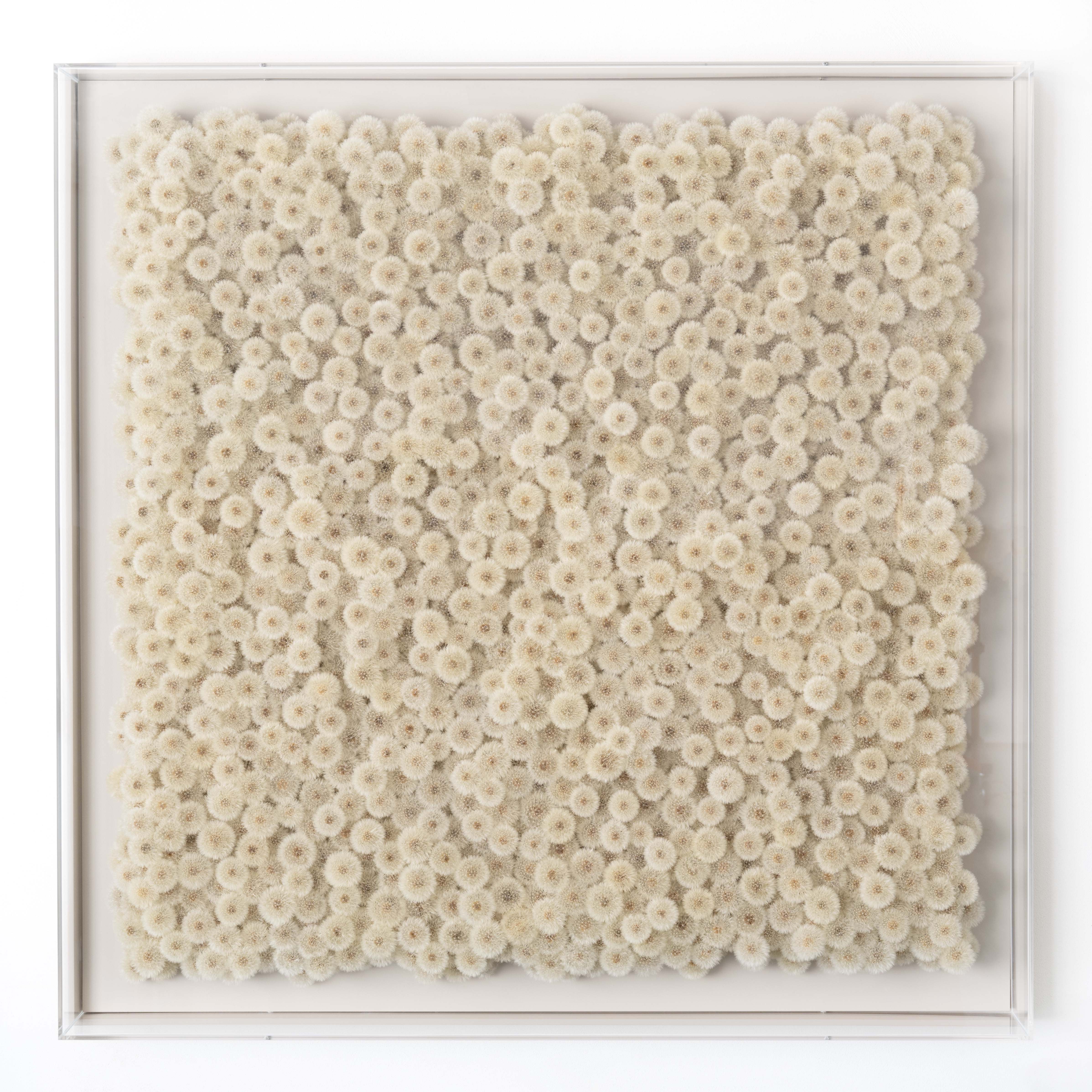
Hilde Trip, Wish Full, dandelion fluff in a perspex cover, 120 x 120 x 15 cm
Her compositions play with patterns and repetition, geometric shapes are formed from hundreds of leaves, peacock feathers and other organic materials. They challenge the viewer to look closer, as at first, they might look like abstract designs but later reveal the carefully stacked, ordered and shaped medium.
MS: What does the process of making your pieces mean to you on a personal level?
HT: It has a calming effect on my ever-busy mind. I often see, at the end of a new design, that I have expressed an issue or desire in my life through the work on an unconscious level.
As Hilde mentions, the slow, repetitive act of arranging each tiny piece is a meditative process, bringing her a sense of calmness. Her art calls to appreciate the beauty of the natural world, seeing it through a lens of curiosity and admiration. In her hands the temporary becomes eternal.
MS: Are there any new materials or techniques you are experimenting with?
HT: At the moment I am working on the design of a table of leaves. It is still in the beginning stage. I am also working on making a lawn-like piece, where you can find all the elements - fluff, clovers, and grasses.
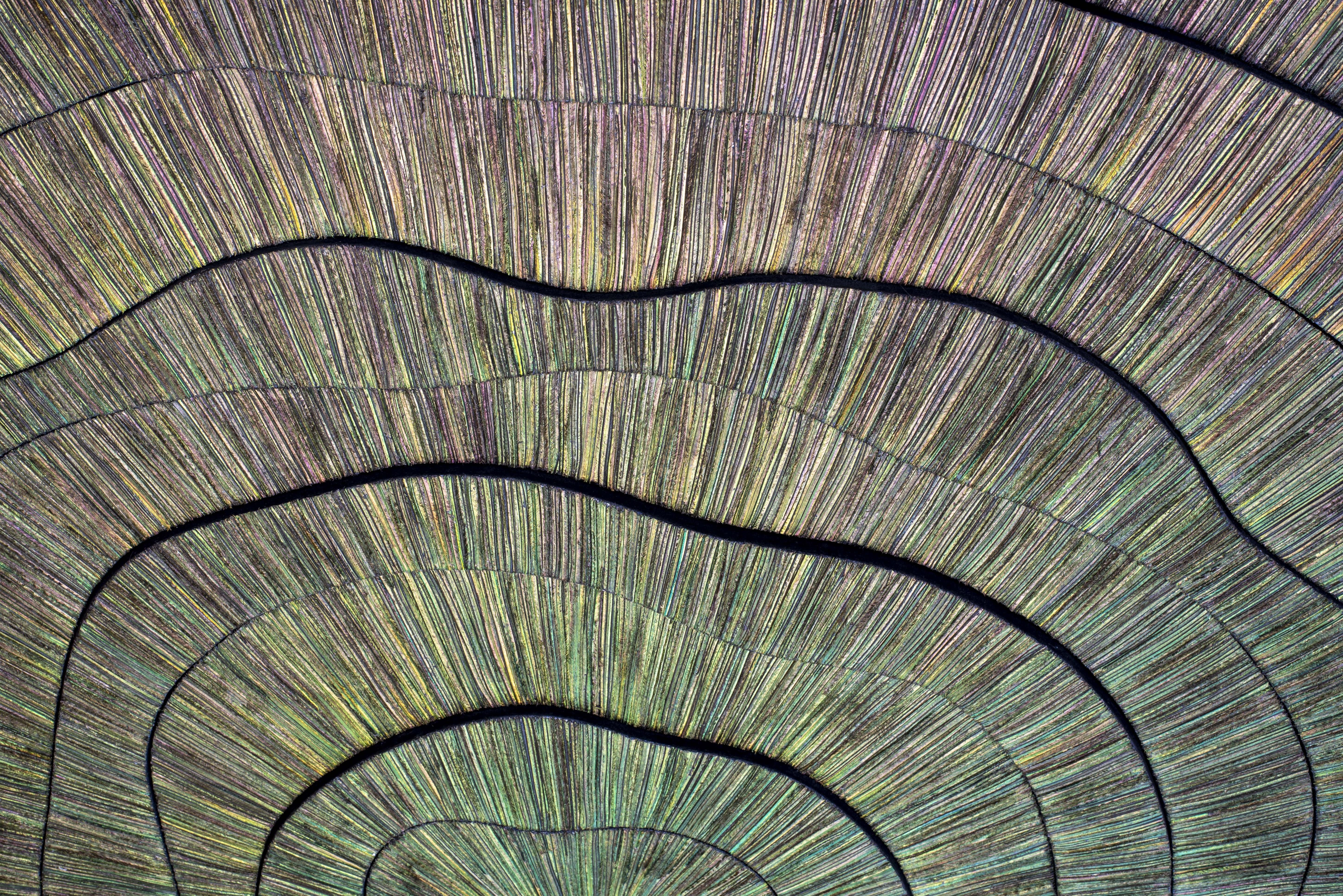
Detail: Hilde Trip, Inside Out, peacock feathers
Article by Martyna Szpilka
